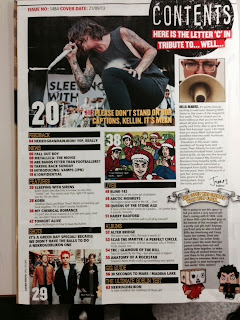Final
Magazine Proposal
The genre of
my magazine will be indie alternative, adhering to the results of my survey as
the majority voted for this particular genre. The title of my magazine will be
called ‘White Stripes’ named after a popular indie band itself, naming a magazine after something familiar that the indie genre audience knows will allow them to acknowledge, from solely the title, that it is an indie alternative magazine. My ideal target audience will be of the ages 16-24 of the female gender
who will be in current education in either college or university. My magazine will
be published monthly to keep to a manageable budget that students can afford at
a price of £2.
I have
decided to create my magazine as the audience I am targeting does not have a
wide range of indie alternative magazines for females to chose from as it is a
niche genre; by having a niche magazine I will attract regular customers who
will chose my magazine to purchase constituently as there is not another
magazine that offers similar contents. I have composed an outline of a possible
double page spread which will focus on a new up and coming band in the music
world of indie alternative, that way my magazine will not only give my audience
news on already existing bands but also new bands that that are the future for
indie alternative. My contents page will strict to the main house style of
toned down blue, lilac and white colours to show a professional consistency; it
will include a brief introduction to what will be on each page for example; ‘page
16: interview with one of indie’s fave artist Florence Welch’.
In order to
attract my target audience I will use familiar language to their age group so
it is easily comprehended by them and to show my magazine is specifically aimed
at that particular age group. I will publish written links for social
networking sites that are about my magazine as a means to include cross media
in my brand to attract an even larger audience.
My magazine
will be glossy as due to teenagers and young adults they tend to be messy, so
if they spill drink when ready the magazine it will not damage the print as
badly than if it was made from a newspaper material.





















